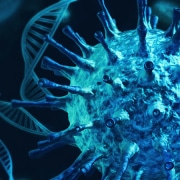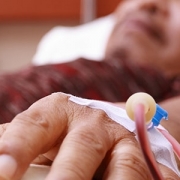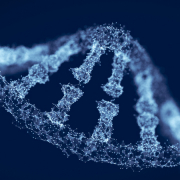100,000 Genomes Project 2021 update: rare disease
Missed Part 1? Click here to read the article
How has rare disease diagnosis and treatment improved in light of data gathered from the 100,000 Genomes Project? Find out in the second part of our series…
Last week, we looked at how data gathered during the 100,000 Genomes Project is being used to inform cancer treatment. The project ran for eight years and officially came to an end in 2018, but it generated such a large amount of genomic information that actionable insights are still being discovered.
In the second and final part of this series, we focus on how whole genome sequencing is being used to process this sea of data, providing diagnoses and treatments to families with rare diseases.
Diagnosing rare disease
A recent paper published in the New England Journal of Medicine has found that WGS combined with clinical data gathered in the 100,000 Genomes Project can help diagnose patients with suspected rare diseases more accurately and efficiently.
The study involved 4660 people from 2183 families, 25% of whom received a new diagnosis as a result of taking part. For patients with intellectual disability, vision or hearing disorders, the success rate was even higher at between 40% and 55%.
Of the diagnoses that were made, 14% were based on variants found in parts of the genome that would have been missed by other types of test, such as gene panels or exome sequencing.
“A large proportion of the diagnoses we discovered were found outside the coding region [of the genome] and would not have been detected by existing approaches” said Queen Mary University of London’s Professor Damian Smedley, who led the study. “This study makes the case for healthcare systems worldwide to adopt WGS as the genetic test of choice for rare disease patients.”
The impact for families
Of the genetic diagnoses that were made, 25% had an immediate impact on clinical decisions for the patient or their family. These included:
- 4 diagnoses that resulted in a change in treatment;
- 26 that led to a recommendation for additional surveillance/screening;
- 13 that meant the person or family were eligible for a clinical trial; and
- 59 that informed reproductive choices.
The paper also highlighted several compelling case studies of how a diagnosis made a difference:
Three generations of kidney disease
A man in his 60s with serious kidney disease had already had two transplants. His father, brother and uncle had all died from kidney disease. The man’s daughter had also inherited the same condition and he was concerned for his then-teenage granddaughter.
WGS showed that he and his daughter had a variant in the INF2 gene that had caused focal segmental glomerulosclerosis – where scar tissue develops in the part of the kidney that filters blood. The granddaughter was shown to have not inherited the gene variant, which eased her grandfather’s concerns, and she was able to stop regular screening, improving her quality of life.
Curing immunodeficiency
A 10-year-old girl had over 300 hospital visits in seven years and was in intensive care with chicken pox.
WGS identified a homozygous variant in the CTPS1 gene, causing severe immunodeficiency. The diagnosis enabled her to receive a bone marrow transplant, curing her of the condition. Her siblings were also tested and did not have the gene variant.
Future pregnancy
A baby became seriously ill soon after birth and died at four months without a diagnosis.
The family consented to WGS going ahead, and it revealed that the child could not make a vital enzyme needed to transport vitamin B12 from the gut, where it is absorbed from food.
This had powerful implications for the couple’s subsequent pregnancy. The child was tested for the same variant within a week of being born and, although the variant was present, the condition was treated successfully with B12 injections to prevent symptoms.
The diagnostic odyssey
Although the study was a success, it is important to consider the often long and complex journey that many families must face in order to get a diagnosis. Of the 25% of participants that did receive a diagnosis, the average person’s ‘diagnostic odyssey’ lasted over six years and involved 68 hospital visits.
As genomics technologies such as WGS become more readily available in healthcare, it is hoped that the time of these journeys can be reduced and that more patients will receive the correct diagnosis much sooner.
To learn more about the challenges faced by families with genetic conditions, visit our rare disease webpage
–









